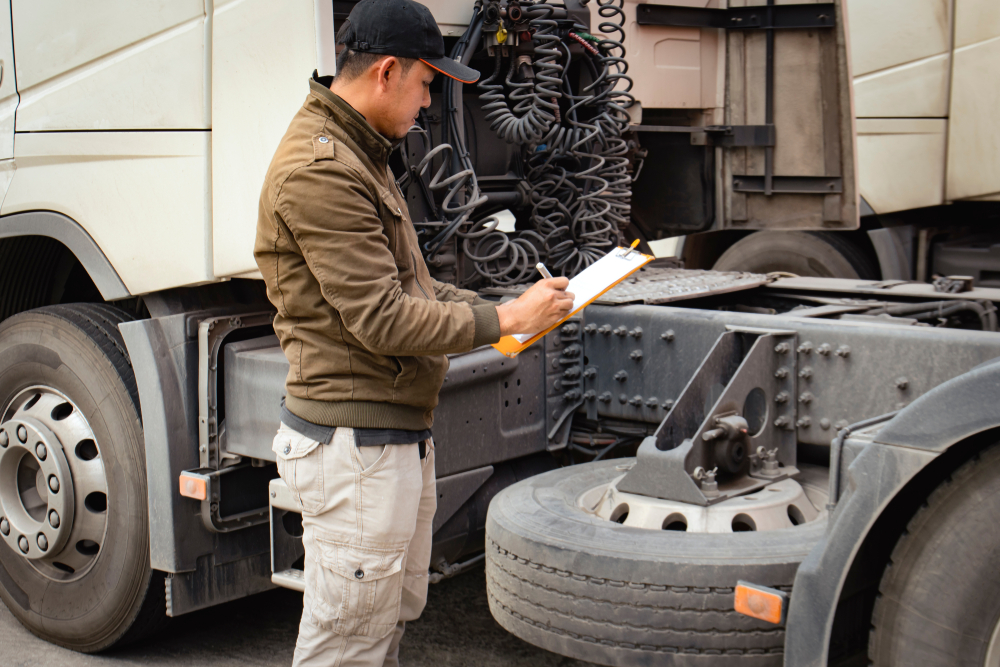Truck Inspection Checklist: How to Keep your Delivery Drivers Safe and Protected

In 2019, there were an estimated 51,410 light or delivery services truck drivers in the United States. With the COVID-19 pandemic closing businesses and fundamentally affecting the way people shop, that number has most likely drastically risen. Furthermore, one recent study estimates that retail e-commerce sales should grow to $10 trillion by the year 2027. The same study finds that in an even shorter time frame, by the year 2024, about 25 percent of all retail sales will be via e-commerce.
As e-commerce and online purchases continue to grow, delivery drivers will also be in high demand. The U.S. Bureau of Labor Statistics finds that “overall employment of delivery truck drivers and driver/sales workers is projected to grow 5 percent from 2019 to 2029, faster than the average for all occupations.” One of the most important elements of delivery driver safety is a properly working vehicle. For companies that rely on delivery drivers, a truck inspection checklist should be the foundation for worker safety. Below, we offer some advice on what to include in your delivery truck inspection checklist
What is a Truck Inspection Checklist?
A company vehicle inspection checklist is important because it is used to regularly evaluate the vehicle’s working condition. In the case of delivery drivers, this daily checklist can identify mechanical issues or defects that could lead to potentially dangerous accidents. For example, a daily inspection checklist carried out by the drivers might be able to identify faulty brakes or low steering fluid levels, both of which could lead to serious accidents. According to one expert, around 500,000 trucking accidents occur every year in the United States, and an estimated 5,000 trucking accidents result in fatalities. Daily inspection checklists can play an important role in lowering the frequency and gravity of trucking accidents.
A truck inspection checklist can also catch problems before they occur, thus avoiding potentially costly tow truck fees or other issues leading to operational downtime. In general, a company vehicle checklist is carried out by drivers during pre-start checks, usually before leaving for their delivery route. Furthermore, mechanics and other safety officers might also be hired to do more thorough inspections on the vehicle at regular intervals throughout the vehicle´s lifespan.
What Should a Company Vehicle Inspection Checklist Include?
The specific company vehicle inspection checklist will most likely depend on the type of vehicle fleet that your drivers operate. However, there are some general elements that every truck inspection checklist should include, such as checks for:
- Body integrity check including frame and undercarriage
- Mirror stability check
- Ensuring that all exterior lights and signals are in working condition
- Checking for cracked glass
- Ensuring that doors and windows are operable
- Identifying any leaks
- Checking for proper fluid levels, including oil, brake, steering, antifreeze, etc.
- Basic engine check
- Checking the tire pressure and tread
- Cooling and fuel systems check
- Ensuring that all belts and hoses in proper condition
- Transmission check, with a specific focus on the mount
- Quick check on the brakes, rotors, and driveshaft
- Check seat and seatbelt integrity
- Heating, A/C, and defrost in operable condition
- Visual check on the vehicle’s suspension system
- Horn working
- All other electrical system components in operable condition
This daily vehicle inspection checklist should be able to catch most of the problems that could lead to safety dangers for your drivers while also prolonging the lifespan of your fleet of delivery vehicles. In some cases, companies may want to implement both pre-trip and post-trip checklists.
With a pre-trip check, the driver of a fleet vehicle should run through an inspection with some of the elements mentioned above. With a post-trip inspection, companies might require drivers to fill out a Driver Vehicle Inspection Report (DVIR) where they will mention any issues noticed that might require more thorough maintenance inspection.
Keep Your Drivers’ Safety In Check With Work-Fit
For companies that rely on a large fleet of delivery drivers, hiring a workforce injury prevention company can also help to limit the number of potential accidents as well as musculoskeletal injuries. Work-Fit is a leading onsite injury prevention and management provider for your workforce. https://www.facebook.com/watch/